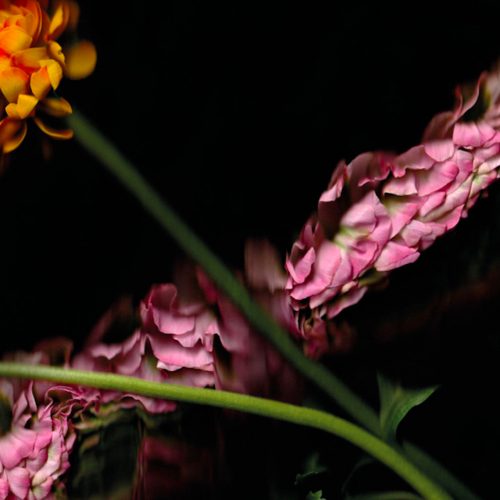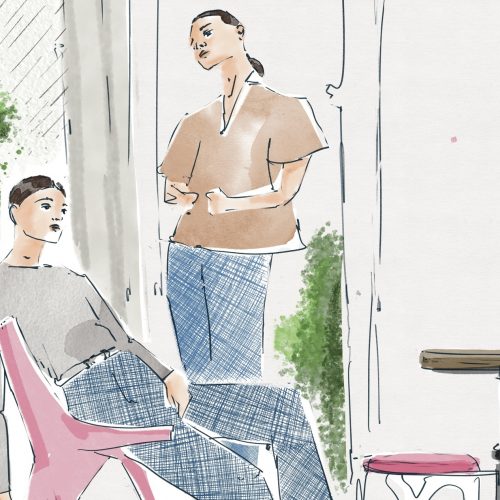The not so Sweet Reality of Easter Chocolate
With Easter around the corner, chocolate sales are skyrocketing. Whilst this treat is undeniably delicious, it’s not sweet for everyone. Let's discover why.
To receive the Luxiders newsletter, sign up here.
WHAT’S THE PROBLEM WITH CHOCOLATE?
Chocolate is incredibly popular. America alone consumes 58 million pounds of chocolate in the week of Valentine’s day. The increasing demand for this sugary treat magnifies the inequality between farmers and chocolate companies. The farmers cannot afford to buy chocolate, as western manufacturers keep the price of cacao as low as possible. This way they can maximise profits by marking up the price of chocolate and hoarding the money for themselves.
But what is it about cacao farming that is so unethical?


DEFORESTATION
It comes as no surprise that chocolate farming is responsible for a lot of deforestation. Most cacao farms veto natural landscapes to make space for cacao trees. In addition, farming land is rarely reused. This means new patches of land are created to make space for crops. Consequently, growing cocoa trees results in mass deforestation to keep up with the high demand for chocolate.
In Africa, it is estimated that 70% of deforestation is due to cacao farming. Much of this deforestation is illegal. As people rely on cacao farming for their income, they continue to wipe landscapes in order to earn a living. Despite it being many people’s source of income, well-known brands like Cadbury's or Nestlé pay their farmers very little. As a result, workers have to produce a lot of chocolate to earn a decent living, increasing deforestation.
Alongside Ghana, the Ivory Coast of West Africa in Côte d’Ivoire produces more chocolate than anywhere else in the world. Consequently, there is a large amount of deforestation in these areas. This is not only bad for our eco-systems but animals too. Elephants' and chimpanzee’s habitats are destroyed by the mass destruction of tropical landscapes facilitating cacao tree planting.
CHILD LABOUR
As the demand for chocolate rises, there are multiple job prospects in cacao farms. As cacao is mostly grown in poorer communities, children often help provide for their families. Traffickers encourage youngsters to work on chocolate farms, promising them good money and enjoyable work. There is a lack of awareness of the perilous working conditions on cacao farms, meaning children are continuously exploited. Children working on cacao farms may not see their families for years after being tricked into accepting work. Studies have shown more than two-fifths (43%) of all children between 5-17 in Ghana and the Ivory Coast in Côte d’Ivoire work in cacao farms.
With families under a financial strain, some parents are forced to sell their children to chocolate farmers. Children are sold for as little as $34 each. We overlook the devastating reality of modern-day slavery in the process of chocolate manufacturing. Society needs to be aware that cocoa farms are dangerous for children in order to make an informed decision about which chocolate companies to support.

WHY IS CHOCOLATE FARMING DANGEROUS?
Young children are forced to work shifts as long as 14 hours, with nothing but a plank of wood to sleep on and an unsubstantial meal to keep them going. After all this work, most of them earn less than $1 a day. On the farm, the children are not given protective clothing when exposed to harmful chemicals in the pesticides sprayed onto the crops. Huge, sharp knives are used to obtain large cacao pods, some as big as footballs. The lack of health and safety regulations allows children to handle these knives without supervision. Moreover, if the labourers do not work fast enough they are beaten. Many children have scars from working on cocoa farms.
If working conditions are this bad, why is no one doing anything about it? Some confectionery companies have acknowledged the poor working conditions on cocoa farms, but they have not done anything to support the workers. However, a glimmer of hope is emerging…
HOPE FOR THE FUTURE
Slowly more people are becoming aware of the unethical reality of their sweet guilty pleasures. Sustainable chocolate companies are becoming more mainstream. One that has recently gained momentum is Tony’s Chocolonely. They are paving the way to slave-free chocolate production by raising awareness and inspiring change.
Whilst the existence of their brand highlights the unsustainable nature of the chocolate industry, they also invest in education for cacao farmers, families, and children. Specialists inform farmers, families, and children about what is and is not safe for children to help out with on the farms. It is okay for young people to work after school to earn some extra money, but farmers and families need to know which jobs are safe for children.
Tony’s Chocolonely demonstrates that chocolate production is possible without exploitation and slavery. They keep in regular contact with politicians and NGOs to pressurise companies to adopt their slavery-free business model.
Seed and Bean and Doisy and Dam are also committed to ethical production and organic chocolate. These brands prioritise the farmers in their business plans, providing quality working conditions and fair wages. There are plenty of other sustainable chocolate companies showing this sweet treat can be ethically produced. If you can afford to, buy chocolate from ethical companies without exploitative business models.
As well as the emergence of sustainable chocolate companies, experts have identified productive farming techniques that result in less deforestation. This allows landscapes to be preserved and farmers to produce enough cacao to make sizable profits.
This Easter, think about where your Easter eggs actually come from. Consider supporting a sustainable chocolate manufacturer to stamp out exploitation and child slavery. Make chocolate sweet for all!
+ Words
Florenne Earle Ledger
Luxiders Magazine




